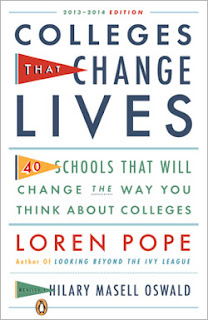 If you
can play the bagpipes, the College of Wooster is the place for you! Wooster,
Ohio is a community of 26,000 that is located about 55 miles southwest of Cleveland,
80 miles northeast of Columbus and 30 miles west of Akron. The town's proximity
to large metropolitan areas allows for easy access to air and bus transportation,
while still far enough away give the town a true Midwestern feel. The campus flows
into the downtown area, providing the campus with a community feel. Founded in
1866 by the Presbyterian church, this liberal arts school is truly unique
amongst colleges.
If you
can play the bagpipes, the College of Wooster is the place for you! Wooster,
Ohio is a community of 26,000 that is located about 55 miles southwest of Cleveland,
80 miles northeast of Columbus and 30 miles west of Akron. The town's proximity
to large metropolitan areas allows for easy access to air and bus transportation,
while still far enough away give the town a true Midwestern feel. The campus flows
into the downtown area, providing the campus with a community feel. Founded in
1866 by the Presbyterian church, this liberal arts school is truly unique
amongst colleges.
1. Independent Study (I.S.)
 |
| Kauke Hall and the famed Arch |
During the process, students work one-on-one with a faculty advisor to complete a written thesis or research project. The partnership meets weekly for an hour to evaluate progress, refine research, present drafts and discuss feedback. From time to time, small groups present materials and findings to other students.
Following Spring Break, students turn in their completed thesis to the registrar's office. In return they receive a yellow and black numbered button stating "I Did It!" along with a coveted Tootsie Roll. Although the celebration begins, students are still required to defend their project in front of a faculty examiner in order to graduate.
One day in April, the college will cancel classes and seniors will display their I.S. theses and projects to the entire school during The Senior Research Symposium. The entire student body walks and discusses the projects with the seniors to stimulate ideas for their I.S. projects.
2. College of Wooster Pipe Band
This black
and gold kilt wearing pipe band participates in many campus events. The
first day of school introduces freshmen to this pipe band. The band marches all
first year students through the Kauke Hall Arch as a symbolic start to their
Wooster careers. It is also through the same arch as seniors, the band will lead
them again. As the last student leaves the registrar's office on I.S. Monday,
the band will lead the provost and seniors through the Arch and into Kittredge
Hall to have a celebratory dinner. The band also leads the seniors through the
Arch on their final day, graduation. 3. Involvement
4. Colleges That Change Lives
This
small, liberal arts school was exactly what Loren Pope was looking for when he
wrote his book, Colleges That Change
Lives (1996). Pope visited numerous colleges that he felt offers as much,
if not more than Ivy League schools. The College of Wooster was one of the 40 schools
that Pope chose to include in his 'educational college guide.' Pope felt that
the College of Wooster was his “original best-kept
secret in higher education." While visiting the school in 2012,
over 15 years after he wrote his book, it is clearly evident that Pope was
correct in his description of the school. From the outgoing students greeting
me as I walked across the campus, to the pride each student had as they discussed
their future senior thesis (I.S.) plans, this college is definitely worth a closer
look for students who want an active college experience.


